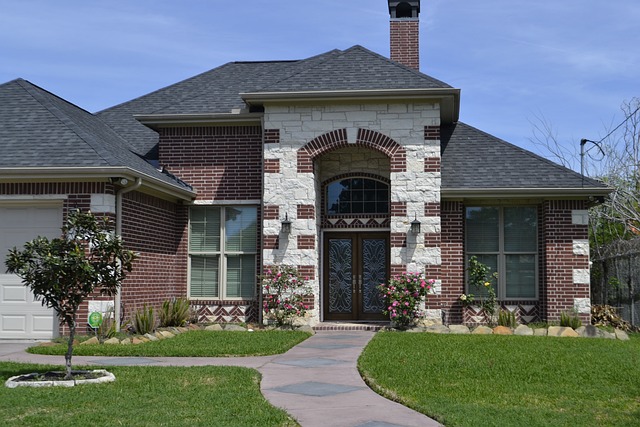Your front door is more than an entrance– it’s the face of your home, shaping first impressions and standing as a shield against intruders and the whims of the weather. While aesthetics matter, material selection emerges as the linchpin, impacting appearance, durability, security, and cost.
This guide delves into the often underestimated importance of selecting a door that balances beauty, durability, and security seamlessly. After all, a well-chosen door promises a swift facelift for your home and ensures smooth operation, minimal maintenance, and potential energy savings, according to Vesta Electric Experts.
Table of Contents
Types of Home Entry Doors
When contemplating a new front door or replacing your old one, the context of your home—whether pre-built or part of a custom design—shapes the options. For existing homes, maintaining the current front entry style often dictates the choice, with traditional doors being the popular go-to due to their versatility and cost-effectiveness in various materials and designs.
In contrast, those embarking on a custom home build enjoy the freedom to explore diverse types of home entry doors. Here are some of the most popular choices and what they offer:
• Traditional Front Door:
Versatile material and design options.
A common choice for front entries due to convenience and affordability.
• Oversized Front Doorway:
Preferred for various reasons, especially wheelchair accessibility.
Creates a bold street presence, particularly with vibrant paint colors.
• Double-Door Entries:
Grand and spacious, eliminating cramped entryways.
Striking visually, with proper installation ensuring excellent insulation against extreme temperatures.
• Custom Designed Doors:
Necessary for unconventional front entry shapes, such as archways.
Custom-made to fit specific openings, adding uniqueness to the overall design.
Whether one chooses to adhere to time-honored traditions or seeks custom aesthetics, the front door, like window installation, plays an important role in shaping a home’s distinctive character and overall functionality.
What’s the Best Material for a Front Door?
After settling on the style of your front door, the next important decision you need to make is to choose the perfect material. Each option has its own advantages and drawbacks, requiring careful consideration. While the definition of the “best” material may vary based on individual preferences, the following materials are definitely something you should consider:
• Fiberglass
Durable and moderately priced. It can be painted or stained for customization.
Requires minimal maintenance but may lack intricate design options.
• Wood
Unmatched quality of appearance.
Easily repairable compared to fiberglass and steel.
Higher cost and increased maintenance compared to other options.
• Steel
Economical option with excellent security and durability.
Susceptible to weather-related wear and challenging to repair small dents or scratches.
A popular choice for those prioritizing cost-effectiveness and security.
• Glass
Often used as an accent material rather than the primary door coverage.
The decision hinges on comfort with a glass-front door.
Preferences play a role in choosing clear glass versus frosted or other decorative glass types.
While personal preferences play a significant role, understanding the characteristics of each material ensures a well-informed decision for your front door. Ultimately, the front door material depends on your specific needs, budget, and aesthetic preferences.
What Front Door Style Offers the Best Security?
If prioritizing security is your top concern, it’s crucial to consider this factor when selecting the right front door style and materials. For instance, glass-front doors are seldom the preferred choice when security is a priority for homebuyers and builders, as glass breaks easily.
Although steel and wood are generally considered more secure materials, and a single traditional front door is often more secure than a double-door entry, it’s essential to recognize that more than one factor influences the overall security of your front door. These include the door frame, handles, bolts, locks, and hinges–key elements in making your front door more secure.
How to Choose an Energy-Efficient Entry Door?
Investing in an efficient entry door is a substantial decision, and ensuring its effectiveness requires attention to specific criteria. One fundamental aspect to evaluate is the door’s energy efficiency, which can be determined through recognized certifications and performance ratings.
Energy Qualifications
Understanding energy qualifications is crucial, as what may be considered energy-efficient in one region might hold different properties in another. The National Fenestration Rating Council (NFRC) provides certified ratings based on two main factors: U-Factor and Solar Heat Gain Coefficient (SHGC).
The U-Factor measures the rate at which a door conducts non-solar heat flow. A lower U-Factor indicates higher energy efficiency. The Solar Heat Gain Coefficient also signifies the fraction of solar radiation admitted through a door and released as heat inside a home. A lower SHGC implies less solar heat transmission and greater shading ability.
Components of an Efficient Entry Door
Apart from energy ratings, you should consider the following components to ensure your entry door’s efficiency:
Quality Door Frame– The door frame bears the door’s weight and exposure to elements. Opt for a sturdy frame from durable materials like pressure-treated wood to withstand environmental conditions.
Excellent Exterior Coating– Ensure the stain/paint and epoxy are high quality for wood doors to prevent peeling and cracking. For steel doors, rust-protecting epoxy is essential. Quality finishes not only enhance durability but also aesthetics.
Good Threshold– The threshold, forming the bottom of the doorway, plays a critical role in sealing and durability. Choose a bumper seal threshold designed to reduce the ingress of wind, debris, and insects while providing added support when the door is closed.
In summary, evaluating energy qualifications and key components ensures that your entry door meets regional energy efficiency standards and delivers long-lasting performance against various environmental factors.”
Featured Image by F. Muhammad from Pixabay




